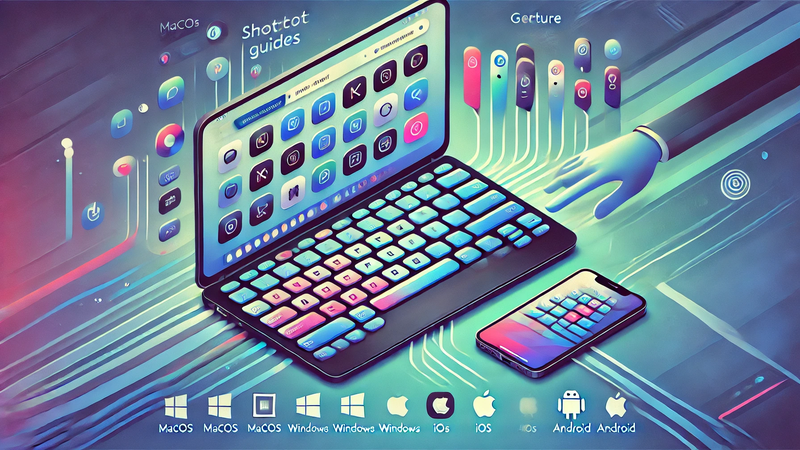
In today’s fast-paced digital age, productivity and efficiency have become paramount. As people juggle work, personal commitments, and countless digital tools, shortcut maker applications have emerged as game-changers. These applications streamline processes by creating customized shortcuts for complex tasks, apps, and workflows, allowing users to save time and effort. This article delves deep into the concept of shortcut maker apps, their benefits, features, and transformative impact on modern life.
What is a Shortcut Maker application?
A shortcut maker application is a tool designed to create shortcuts for various tasks, applications, or functions on devices such as smartphones, tablets, and computers. These shortcuts can be placed on home screens, desktops, or within specific apps to allow for one-tap or one-click access to frequently used functions or sequences of tasks.
For example, instead of navigating through multiple screens and menus to send a specific email or launch a series of apps, a single shortcut can do it all. These tools are particularly popular on mobile devices, where the interface can be optimized to improve accessibility.
Key Features of Shortcut Maker Applications
- Customizable Shortcuts
Users can create shortcuts tailored to their specific needs, such as launching an app, opening a file, or performing a series of automated actions. - Integration with System Apps
Most shortcut makers seamlessly integrate with native system apps, enabling quick actions like calling a contact, composing an email, or sending a text. - Support for Third-Party Apps
Advanced shortcut makers can interact with third-party apps, such as social media platforms, streaming services, or cloud storage. - User-Friendly Interface
Many shortcut makers prioritize intuitive design, allowing users to easily create and manage shortcuts without needing technical expertise. - Task Automation
By incorporating elements of automation, some shortcut makers go beyond simple actions to create workflows that handle multiple tasks sequentially. - Cross-Device Synchronization
High-end shortcut makers often allow users to sync their shortcuts across devices, ensuring a seamless experience regardless of the platform.
Popular Shortcut Maker Applications
1. Shortcut Maker (Android)
One of the most popular options for Android users, this app provides a simple interface to create shortcuts for apps, activities, or custom tasks. Users can personalize icons and names, making navigation more intuitive.
2. Apple Shortcuts (iOS)
Pre-installed on iOS devices, Apple Shortcuts is a powerful tool that allows users to automate tasks across their devices. With integrations into the Apple ecosystem, users can create workflows like sending a “Good Morning” message, launching a playlist, and setting reminders with a single tap.
3. Tasker
This Android app takes shortcuts to the next level by enabling advanced automation. Users can create complex sequences triggered by events such as location, time, or system status.
4. IFTTT (If This Then That)
While not a traditional shortcut maker, IFTTT is a popular platform for creating automated workflows between apps and devices. It works by linking triggers (e.g., receiving an email) to actions (e.g., saving the attachment to Google Drive).
The Benefits of Shortcut Maker Applications
- Time-Saving
Shortcuts reduce the need for repetitive actions, saving seconds or even minutes on tasks, which adds up over time. - Improved Accessibility
For individuals with physical or cognitive disabilities, shortcut makers simplify complex interactions, making technology more inclusive. - Enhanced Productivity
By streamlining workflows, users can focus on high-priority tasks instead of navigating apps and menus. - Personalization
Users can customize shortcuts to match their habits and preferences, creating a digital environment tailored to their needs. - Error Reduction
Automated shortcuts minimize the likelihood of human error by executing predefined actions precisely.
Applications in Real-World Scenarios
1. Professional Use
In a workplace setting, professionals can use shortcut makers to automate repetitive tasks such as generating reports, setting up video conferences, or sending routine emails.
2. Personal Organization
Individuals can streamline their daily routines by setting up shortcuts for activities like ordering groceries, managing calendars, or launching fitness apps.
3. Smart Home Integration
Shortcut makers can integrate with smart home devices, enabling users to control lighting, adjust thermostats, or play music with a single command.
4. Education
Students and educators can use shortcut makers to quickly access study materials, manage schedules, or automate research workflows.